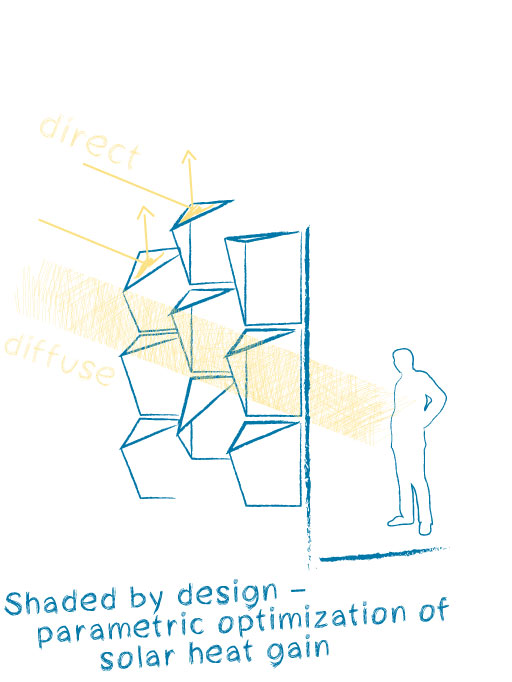Harvard Science and Engineering Complex, Allston, MA, USA


The proposed Science and Engineering Complex (SEC), located on Harvard University’s emerging Allston campus, integrates Harvard’s engineering programs into a single 497,000-square-foot structure. The new facility establishes a strong precedent for the development of outdoor space, street activation, and integration with larger public space networks, as described by the University’s Institutional Master Plan, which was approved in 2013. Built on top of the existing foundation of a previously-designed life sciences complex that was suspended in 2008, it accommodates teaching and research laboratories, classroom space, faculty and staff offices, and a host of amenity spaces.
The energy supply for the entire campus is pre-set. A new central plant using natural gas-fueled cogeneration also serves for heating and cooling. Thus, for Transsolar, special emphasis was placed on effectiveness in façade design and energy consumption of the laboratories in the development of the integrated climate and energy concept.
The façade concept focuses on providing exceptional daylight access and natural ventilation, which are especially challenging in laboratory buildings. Both the exterior screen surrounding the upper-level research boxes and the plinth terrace overhangs were carefully tuned with extensive parametric performance studies for solar control and daylighting in response to orientation and program. All glass is triple glazing for reduced heat loss – although often seen as a cost premium, triple glazing resulted in a multimillion dollar net cost savings, because the higher glass surface temperature eliminates the need for supplemental perimeter heating.
All ventilation air for non-lab spaces passes through the two major atria before being reused as makeup air for laboratories. All non-lab spaces – including write-up spaces adjacent to labs, have access to natural ventilation. Write-up spaces also act as a buffer between laboratories and the exterior, cascading make-up air from write-up to laboratory.
For laboratory energy use minimization, the design team advocated for a detailed risk assessment in order to operate laboratories at the lowest possible ventilation rates, with extensive studies by Transsolar on the influence of ventilation rate on energy use. High-efficiency runaround heat recovery, including indirect exhaust air adiabatic cooling, is used on nearly all air streams. Laboratory plug loads were also predicted based on long-term monitoring of representative existing labs on Harvard’s campus.
As a result of these leading-edge laboratory design measures, annual site energy use is predicted at 83 kBtu/sf, resulting in a 40% reduction in carbon emissions over an ASHRAE 90.1-2010 baseline building.
2023 International Institute for Sustainable Laboratories (I2SL) Sustainable Laboratories Award
2023 Vitruvian Award Outstanding Facade Integration
2023 German Lightdesign Award
2023 COTE Top Ten Award, American Institute of Architects
2022 American Architecture Awards
2021 LEED Platinum certification
2021 Living Building Challenge Petal: Healthier Materials, Beauty, and Equity








